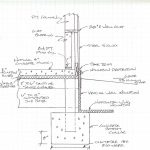Here are some common first-time homebuyer programs:
- Down Payment Assistance Programs: These programs offer financial assistance to cover a down payment portion required to build a home. Down payments are typically a significant barrier for many first-time buyers, and these programs help reduce upfront costs, making homeownership more achievable.
- Low-Interest Mortgage Loans: First-time homebuyers may be eligible for special mortgage loans with lower interest rates compared to standard loans. These lower interest rates can result in substantial savings over mortgage’s life.
- Federal Housing Administration (FHA) Loans: FHA offers mortgage loans with lower down payment requirements and more lenient credit criteria, making it an attractive option for first-time buyers. With an FHA loan, borrowers may be eligible for a down payment as low as 3.5% of a home’s purchase price.
- Fannie Mae and Freddie Mac Programs: Fannie Mae and Freddie Mac are government-sponsored enterprises offering conventional loans with competitive interest rates and down payment options. First-time homebuyers can benefit from special programs like HomeReady (Fannie Mae) and Home Possible (Freddie Mac) with reduced down payment requirements and flexible eligibility criteria.
- Department of Veterans Affairs (VA) Loans: VA loans are exclusively available to eligible veterans, service members, and surviving spouses. These loans offer no down payment and generally have more lenient credit requirements, making them an excellent option for qualified first-time homebuyers with military service.
- United States Department of Agriculture (USDA) Loans: USDA loans are designed to help low-to-moderate-income borrowers purchase homes in eligible rural areas. These loans offer 100% financing, meaning no down payment is required, and they often come with competitive interest rates.

- Mortgage Credit Certificates (MCCs): MCCs are tax credits helping reduce amount of federal income tax owed by first-time homebuyers. This credit is calculated based on a percentage of mortgage interest paid each year, providing additional savings.
- Forgivable Loans: Some programs offer forgivable loans to first-time homebuyers, this means some or all of your entire loan amount is forgiven after a specified period, usually if homeowner remains in this property for a certain number of years.
- Grants for Closing Costs: First-time buyers may be eligible for grants to cover part or all of their closing costs. This can significantly reduce upfront expenses associated with buying a home.
- Homebuyer Education Programs: These programs provide educational resources, workshops, and counseling to help first-time buyers navigate home buying process with confidence and make informed decisions.
- State Housing Finance Agency (HFA) Programs: Many states have their own housing finance agencies offering various first-time homebuyer assistance programs. These may include down payment assistance, low-interest loans, and closing cost assistance. Each state’s HFA programs will have different eligibility criteria and benefits.
- Government-backed Loans: Government entities offer loans with more lenient credit requirements and lower down payment options to assist first-time homebuyers with limited financial means.
To access these First-Time Homebuyer Programs, potential buyers should research available options in their state or local area.
They can also reach out to a HUD-approved housing counseling agency or consult with a local mortgage lender to explore best programs for their specific financial situation and homeownership goals.
REGIONAL INCENTIVES AND REBATES – CAPITALIZING ON LOCAL OPPORTUNITIES:
In addition to national tax credits and programs, many regions and municipalities offer incentives and rebates to encourage new home construction.
These localized incentives can include property tax reductions, waived construction fees, and support for infrastructure improvements related to new developments.
Stay informed about regional announcements and work closely with your builder to ensure you meet all requirements for these regional benefits.
Taking advantage of local incentives could lead to substantial cost savings during construction and beyond.
INTEREST ON A CONSTRUCTION LOAN
If you took out a construction loan to build your home, then chances are you paid interest on your loan.
Interest on a construction loan may be tax-deductible, but rules and eligibility criteria can be complex and vary depending on specific circumstances.
To determine if you can deduct construction loan interest, consider these following factors:
- Type of Construction Loan: Interest deduction eligibility might depend on type of construction loan you have. There are generally two types of construction loans: construction-to-permanent loans and standalone construction loans. Each may have different rules regarding interest deductibility.
- Intended Use of Property: Tax deductibility of construction loan interest might be influenced by property’s intended use. If you are building a primary residence, interest may be deductible under certain conditions. However, if property is intended for rental or investment purposes, different rules may apply.
- Time Frame for Construction: Interest on a construction loan used to your primary residence may be deductible during period when home is being constructed. After construction is complete and you convert loan into a permanent mortgage, mortgage interest may also be eligible for deduction.
STATE SALES TAX
When you purchased building materials, you may have paid state sales tax.
If amount you paid was larger than amount of your local or state income tax, you can deduct state sales tax you paid from amount you pay to Federal government.
Again, this is an itemized deduction. You also can’t take local and state deduction for income tax if you take state sales tax deduction.
HOW TO CLAIM NEW HOME CONSTRUCTION TAX CREDITS AND BREAKS
Claiming new home construction tax credits can be a complex process, as it depends on specific tax credit and region where you are building.
- Determine Eligibility: First, ensure you meet all eligibility criteria for specific new home construction tax credit you intend to claim. Different tax credits have different requirements, such as income limits, property location, energy efficiency standards, and more.
- Keep Detailed Records: Maintain meticulous records of all construction-related expenses and documentation, such as receipts, invoices, and construction contracts. These records will be essential when calculating tax credit and supporting your claim.
- Complete Construction: Ensure your new home construction is completed and meets all necessary tax credit criteria. For example, if you are claiming an energy-efficient tax credit, ensure your home includes all qualifying features and meets required standards.
- Obtain Necessary Forms: Check with tax authorities or Internal Revenue Service (IRS) to determine appropriate tax forms you need to use to claim any specific tax credit. Commonly used forms might include Form 5695 for Residential Energy Credits or Form 1040 for general tax credits.
- Complete Tax Forms: Accurately fill out required tax forms, providing all necessary information about your new home construction and related expenses.
- Calculate Tax Credit: Based on information provided, calculate tax credit amount you are eligible to claim. Be sure to double-check your calculations and verify you have claimed all eligible expenses.
- File Your Taxes: When you file your tax return, include all completed tax forms and any supporting documentation related to your new home construction tax credit claim.
Review and Seek Professional Advice: Before submitting your tax return, carefully review all information to ensure accuracy. If you have any doubts or uncertainties, seek advice from a tax professional who can assist you in claiming tax credits correctly.
 DEAR KURT: Thank you for your investment in a new Hansen Pole Building – be sure to send me lots of progress photos during construction (and of course ones when it is all complete).
DEAR KURT: Thank you for your investment in a new Hansen Pole Building – be sure to send me lots of progress photos during construction (and of course ones when it is all complete). DEAR GREG: Any possible movement would come from either inadequately compacted or loose soil below column footings, inadequate footing diameter, or frost heave. To prevent frost heave, columns footings should be placed at frost depth or deeper and perimeter of slab should be insulated vertically with rigid insulation. In your climate zone, this would entail a four foot ‘tall’ R-10 insulation board. Install on inside face of pressure preservative treated splash plank, with top of insulation even with top of concrete slab. As an alternative, you can insulate slab perimeter per Frost-Protected Shallow Foundation requirements found here (note, slab edge does not have to be thickened or have a stem wall):
DEAR GREG: Any possible movement would come from either inadequately compacted or loose soil below column footings, inadequate footing diameter, or frost heave. To prevent frost heave, columns footings should be placed at frost depth or deeper and perimeter of slab should be insulated vertically with rigid insulation. In your climate zone, this would entail a four foot ‘tall’ R-10 insulation board. Install on inside face of pressure preservative treated splash plank, with top of insulation even with top of concrete slab. As an alternative, you can insulate slab perimeter per Frost-Protected Shallow Foundation requirements found here (note, slab edge does not have to be thickened or have a stem wall):  DEAR POLE BARN GURU: Hello Guru! We were wondering if the USDA Rural Development program allows for the construction of a pole barn home? KIRSTYN in LANSDALE
DEAR POLE BARN GURU: Hello Guru! We were wondering if the USDA Rural Development program allows for the construction of a pole barn home? KIRSTYN in LANSDALE





